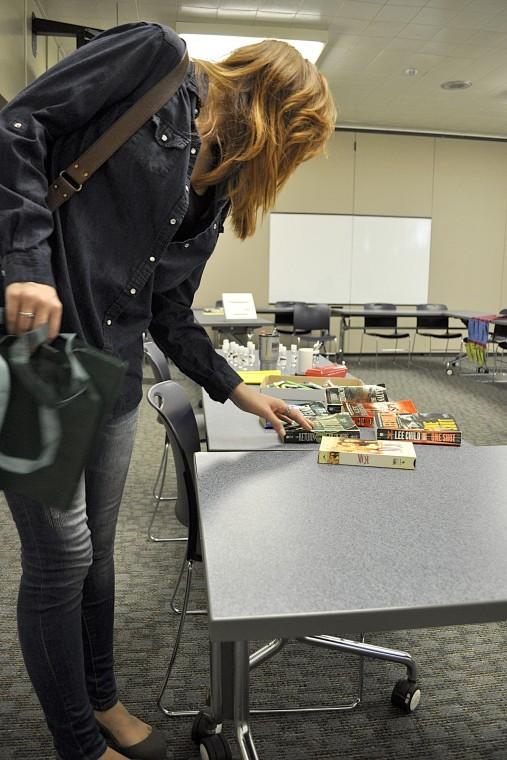Swap meet attempts to help students realize the value of reusing items
Junior Illustration major, Jaqueline Adamiak looks through books at the Swap Meet in Neptune Central Wednesday. The swap meet helped raise awareness of landfills and promote the reuse and recycling of items.
September 28, 2011
Freshman hospitality administration major Niambi Thompson had to stop when she saw a lime green sign with bold black letters that said, “FREE STUFF.”
“I saw the sign and wanted to find out what it was,” Thompson said. “I like free stuff.”
As part of a new campus initiative called “New to You,” Neptune Central hosted the first monthly swap meet from 9 a.m. to 3:30 p.m. Wednesday in the southeast meeting room.
Mary Spring, administrative assistant for the Office of Student Affairs and Enrollment Management, said having students donate and exchange reusable items can help reduce landfill waste.
“We’re hoping that students will become more aware in the thought that things that can still be used should be passed on rather than taking up space in a landfill,” Spring said.
Accountant Suzanne Sedlacek said 36 students came to the swap meet and she expects this number to increase in the future through more advertising.
Spring said the Living and Learning Community of Practice of Student Affairs and Enrollment Management committee came up with the idea. The committee hopes to eventually have swap meets off-campus and at other residence halls, Spring said.
Sedlacek said besides getting free items, students gain an increased awareness about sustainable practices. One example, Sedlacek said, is giving students at the swap meet cloth bags to decrease plastic bag usage.
“We’re trying to make people aware that a simple lifestyle change like remembering to bring that bag with you to the store is going to make a difference,” Sedlacek said. “It has to start with one person and then it will multiply.”
The Office of Student Affairs and Enrollment Management plans to send a survey to participants this spring to gauge what they have learned and if their habits have changed, Spring said.
Many people throw away clothing items when they go out of style instead of reusing the item in some way, Sedlacek said. What they may not realize is water is a “precious commodity” utilized in making almost everything people use, Sedlacek said.
“These things are all linked together,” Sedlacek said. “It’s like getting the dominoes now to fall in the right direction instead of the wrong one.”







